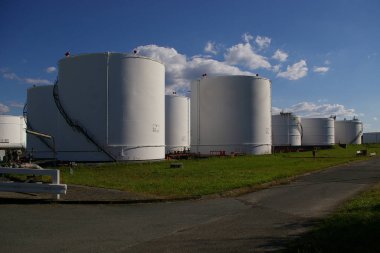Global Industrial Oil Demand Expected To Grow Slightly
Although global demand for finished oils will see only minimal growth over the next five years - Kline & Company estimates that global demand for finished lubricants was approximately 39.4 million tons in 2015, with a projected CAGR of no more than 1% through 2020 - -However, some sectors still offer opportunities for lubricant merchants, particularly the high-end lubricants used in several industries.
Slight market growth
Asia Pacific is the top regional consumer, accounting for 44% of the total, followed by North America and Europe with 23% and 17% respectively. Africa and the Middle East together accounted for 8%, the same size as South America's share.
The largest volume category in lubricants is the automotive category. Last year, engine oils accounted for 44% of global lubricant consumption, a figure that includes 23% of heavy-duty engine oils and 21% of car and motorcycle engine oils.
In addition to engine oils, lubricants are consumed in the following applications: process oils, 15%; other automotive oils, 9%; hydraulic fluids, 8%; industrial engine oils, 8%; general-purpose industrial oils, 7%; metalworking fluids, 6%, and greases, 3%.
Excluding process oils, global demand for industrial oils/fluids was approximately 12.2 million metric tons in 2015, and is expected to show little to no growth over the next five years, averaging only 0.6% per year. The three major industrial lubricant consumption categories are: hydraulic fluids, about 3.2 million tons; industrial engine oils, about 3 million tons; and metalworking fluids, just over 2 million tons.
The top five countries in the industrial lubricants consumption market accounted for 51% of the 2015 demand. The U.S. led the way at just under 2.5 million tons, followed by China at just over 1.5 million tons. Japan and Russia consumed just under 1 million tons each, and India consumed about 500,000 tons of industrial lubricants/fluids.
High Quality Trends
Although the overall market forecast is flat, Kline still sees growth and opportunities in certain product categories and in certain countries.
A partial reason for making a market or category attractive is growth in demand, but profitability is also an important factor. Premium lubricants - typically blended from synthetic and semi-synthetic base stocks - tend to deliver good margins.
The good news is that demand for lubricants is shifting to higher-quality products across numerous lubricant type ranges and regional markets. According to Klein's research, synthetic and semi-synthetic oils are increasingly catching up with conventional oils, especially in the industrial lubricant/fluid segment, due to their higher quality and longer life cycle.
With the global penetration of synthetic oils, excluding process oils, the market share was around 13% in 2015 and is expected to reach 15% in 2020. In total, synthetic oils are growing at a rate of 2.9% - about five times the growth rate of overall industrial oils.
Admittedly, it's a recessionary market, but there are tons of opportunities for premium oils, synthetic and semi-synthetic. Due to differences in equipment use as well as maintenance, synthetic and semi-synthetic oils have the highest penetration in Europe & North America, with Asia-Pacific, Africa, the Middle East, and South America lagging behind.
In the U.S., the share of synthetic oils was estimated at 20% in 2015, and although the total volume is flat, the share is expected to reach 22% by 2020. In terms of U.S. consumption in the automotive category, it can be seen that synthetic engine oils for passenger cars are advancing very rapidly and are mostly driven by OEM technology needs.
In addition, the U.S. power generation industry is also seeing relatively rapid growth in demand for synthetic lubricants. Last year, this industry accounted for 14% of total industrial oil/fluid demand. New changes-primary types of power and procurement, and more wind turbines being installed offshore-have given synthetic gear oils and synthetic greases a pulling influence.
Globally, the compressor oil and freezer oil segments are expected to see the highest percentage of synthetic oils: 60% by 2020. Compressor oils, in particular, are an interesting segment. They are bundling extended warranties and longer drain intervals with their private label oils, which can work in favor of some suppliers, but really creates strong demand for synthetic oils in the compressor oil segment.
On the other hand, more than 70% of refrigerator oils will be synthetic by 2020. As you can see, freezer oils are a growth category, especially in mobile air conditioning units. Vehicle production and sales are continuing to grow in Asia, Africa, and South America, and more cars will soon be equipped with air conditioning as standard - a strong driver for the continued growth of synthetic freezer oils.






